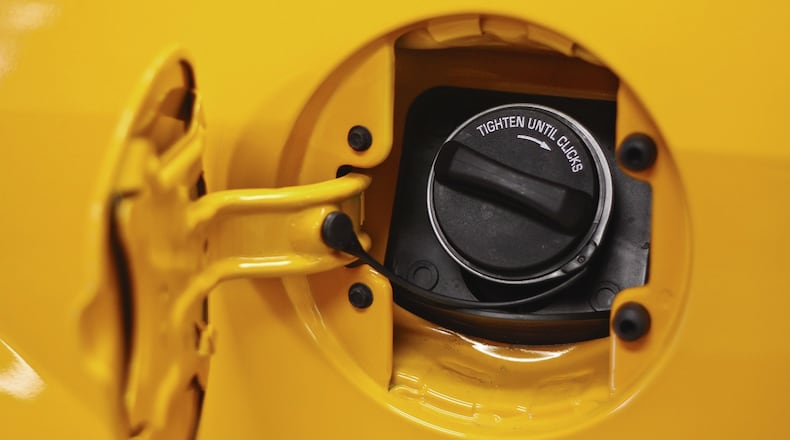Well, neither my 2019 GMC Terrain nor my wife’s 2021 Honda Accord even have a gas cap. And I’m pretty sure they were not stolen! How is that possible? There is no way for the tank to be pressurized without a cap. And gas fumes can certainly evaporate and escape through the filler spout.
What’s going on, Ray? -- Scott
RAY: Oh no. GMC and Honda forgot to order gas caps!
Actually, I think Ford was the first manufacturer to go “capless.” It’s not really capless. The cap is just on the inside now. It’s a spring-loaded flap located just inside the filler opening.
When you insert the fuel nozzle, it pushes the cap out of the way and allows you to add fuel. When you remove the nozzle, the internal cap springs back into place. It has a rubber O-ring around it to seal the filler opening and keep both gasoline and vapors from escaping.
So it works exactly like a gas cap does, except you never have to remove it, replace it, tighten it or go back to the gas station because you accidentally left it on top of the pump and drove away. A week ago.
These capless filler necks have been around for years now, and they seem to work great.
The only downside is that if you need to add emergency fuel -- from a can with a flexible hose, for instance -- you can damage the cap mechanism. So, several companies, like Ford and Honda, include a little plastic spout to use just for that purpose. You can check your owner’s manual to see if your car has one, and where it’s stored.
Think of the world without gas caps like wireless internet, Scott. The lack of a wire doesn’t mean you can’t check your email. It just means you no longer have a wire to trip over.
Jump starts can be more complicated with newer cars
Dear Car Talk:
We live in Minnesota and have two 2009 cars, which we park on the street. Last winter, the battery failed on one of our cars when the temperature had been below minus 10 degress for ... awhile.
As sensible Minnesotans do, we have jumper cables in the trunk. A friendly shopkeeper offered to let us jump our car off of hers. White on white -- red on red -- but there were no white and red terminals on her newer, more modern battery! It was a more recent Chevrolet. Please explain! -- Sharon
RAY: Jump-starting is more complicated than it used to be, Sharon. Just like feeding a family of four.
You used to be able to throw some slop on four plates, and everybody was happy. Now one person is vegan, another is pescatarian, one is lacto-ovo and the fourth one refuses to eat breadcrumbs.
Cars used to have two, easily accessible and clearly marked battery terminals. But now, lots of manufacturers don’t want you getting anywhere near the battery. And some batteries aren’t even under the hood anymore.
Many now have “jump points,” which are standalone, remote terminal ends designed just for jump-starting.
So, if you either don’t see the battery, see the battery but can’t reach a terminal, or see the battery, but don’t see a plastic cover with a plus sign or the letters “POS” on it, check the owner’s manual for the position of the jump points in the engine.
By the way, every car my late brother Tom owned had the letters POS on it. But in his case, they had periods after each letter.
Anyway, the jump points will usually have a plastic covering and will have that same plus sign or POS designation for the positive terminal. Once you find that, remove the plastic cover and attach your positive cable to that metal post.
The approved order is positive dead car to positive live car. Then negative live car and negative dead car. Then duck.
Actually, we recommend that instead of attaching the final jumper clamp to the negative terminal of the dead car, you attach it to a solid, substantial, bare piece of metal in the engine, like the engine block. That way, when that last connection creates a small spark, it won’t be near the battery.
You can also use the engine block as a negative terminal if you can’t reach the negative terminal or if the car doesn’t provide a negative jump point for you.
But if you’re in doubt about how to do it, call for help. Don’t risk your safety or your car’s electronics, unless you’re in imminent danger of being eaten by mountain lions.
Once you’re done and you’ve got your car running, Sharon, the next step would be to move to Florida. Minus 10? Really?
Got a question about cars? Write to Ray in care of King Features, 628 Virginia Drive, Orlando, FL 32803, or email by visiting the Car Talk website at www.cartalk.com.
About the Author

